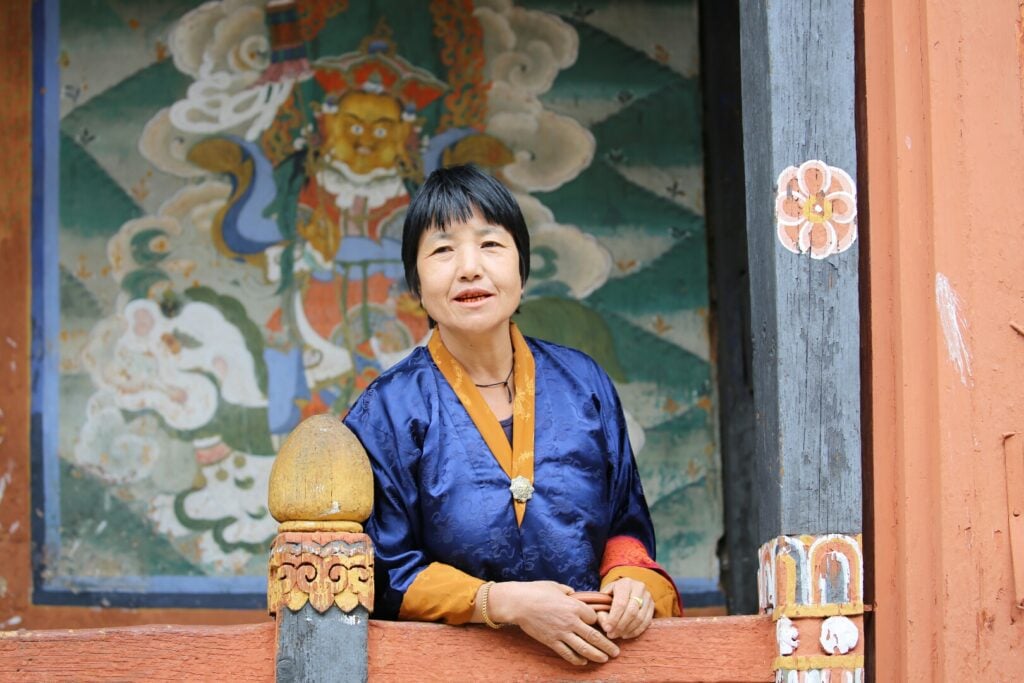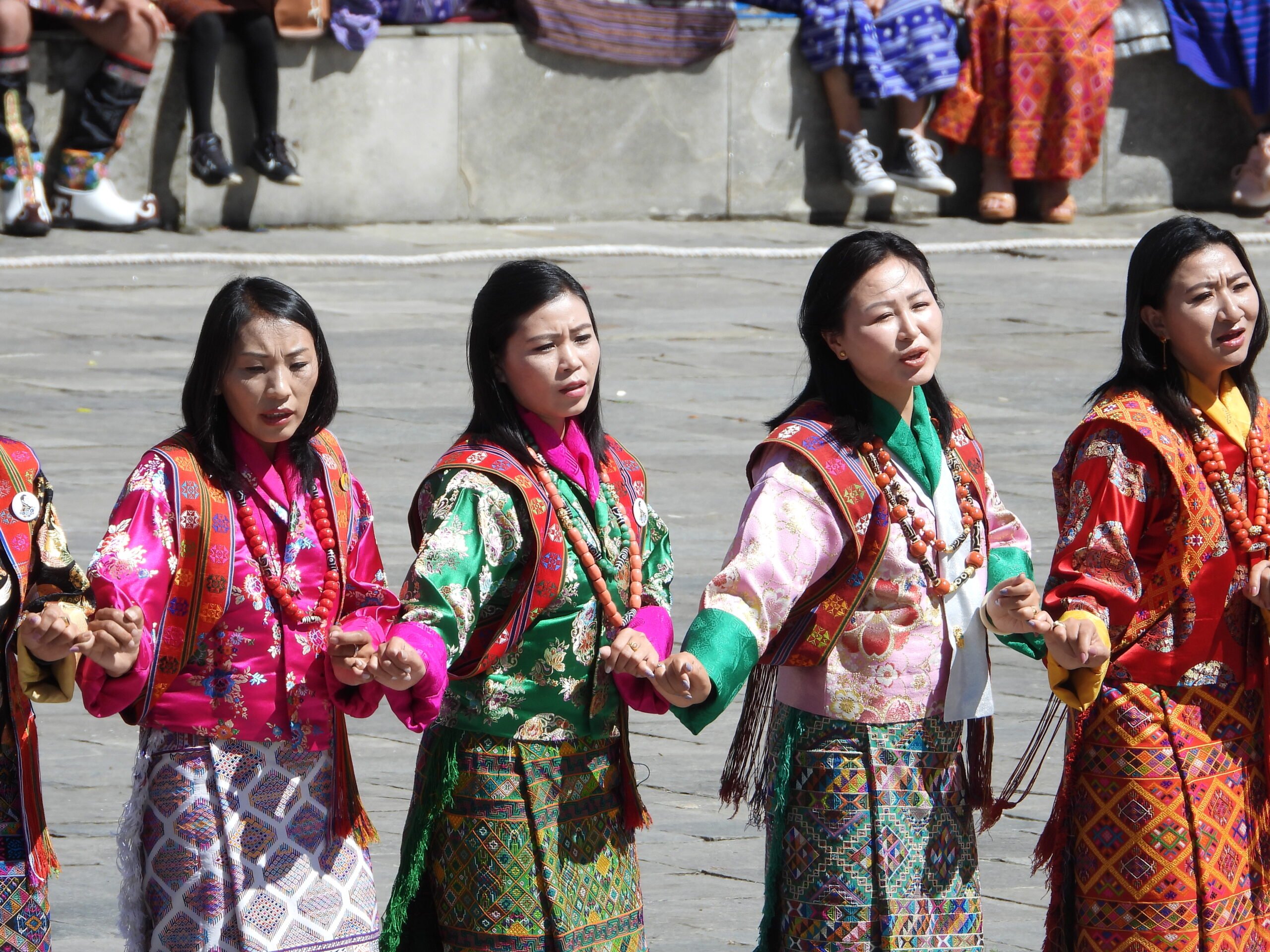The kira is the national dress for women in Bhutan. It is worn in government offices, during religious festivals, and at rituals. It is a rectangular piece of ankle-length clothing, similar to the traditional dresses of Thai women or the Tibetan chupa. However, the details of how all three are worn vary.
The outfit is worn alongside a tego and a wangu, an outer jacket and inner wrist-length vest. Additionally, a belt called kera is used to fasten the kira.
The kira was first introduced 500 years ago, in the 16th century, by Zhabdrung Ngawang Namgyel. This was an important part of the unification process of the country, in building a distinctive nation-state separate from Tibet.
With time, the kira, unlike the gho, has evolved.
First Stage
The first stage of the kira in Bhutan is vastly different from how it is worn today. Initially, the kira was worn well above ankle length, which is also how older generations mostly don the outfit to this day. That is why if a young person wears a kira above ankle length, they are considered old-fashioned. Women wore full-kira, and the now-common half-kira must have been unheard of. Full-kira is when clothing covers the entire body, till the collar bones.
Second Stage
The outfit must have remained unchanged for the most part for the next hundred years or so. Bhutan remained land-locked until the 19th century, and activities such as trade and commerce were limited. Therefore, it is speculated that the kira didn’t change much, whether in terms of the material or style of wearing. During this dormant period, women must have continued to wear homemade kiras, apart from the silk tego and wangu that came from Tibet.
The Half-Kira Stage
This stage can be considered the most active, occurring in the late 19th century and during the 20th century, when Bhutan opened up to the outside world. As trade started with India, the kira also changed. For instance, we saw more cotton kiras appear, along with half-kiras, worn during hotter seasons. This trend was most evident in the border town of Phuntsholing, spreading to the rest of the country to the point where the government actually worried about it.

The first sign of this concern was evident in schools when it was enforced for students to wear the full kira, which inadvertently aided in the popularity of the half-kira. Interestingly, the full-kira did return, though not in its old glory. It became fashionable as young people posed for social media, at festivals, or when the main lead in a music video wore a full kira.
Present Time
Currently, there are many kinds and types of kira in the market. It would be foolish to classify them solely based on the way they are worn and their raw materials. The latest version of the kira is called the hook-kira, where an in-built metal hook instead of a traditional belt is used to hold the kira.
To book your trip to Bhutan, contact us at [email protected] or call +975 1711-2338 any time, anywhere!


